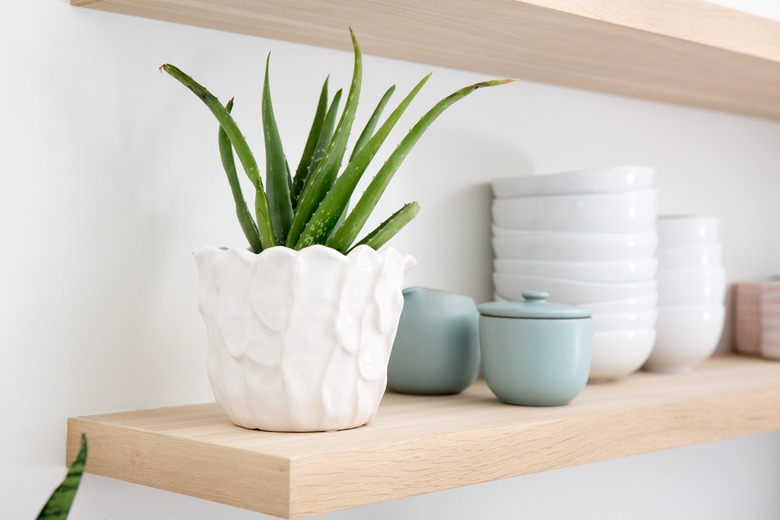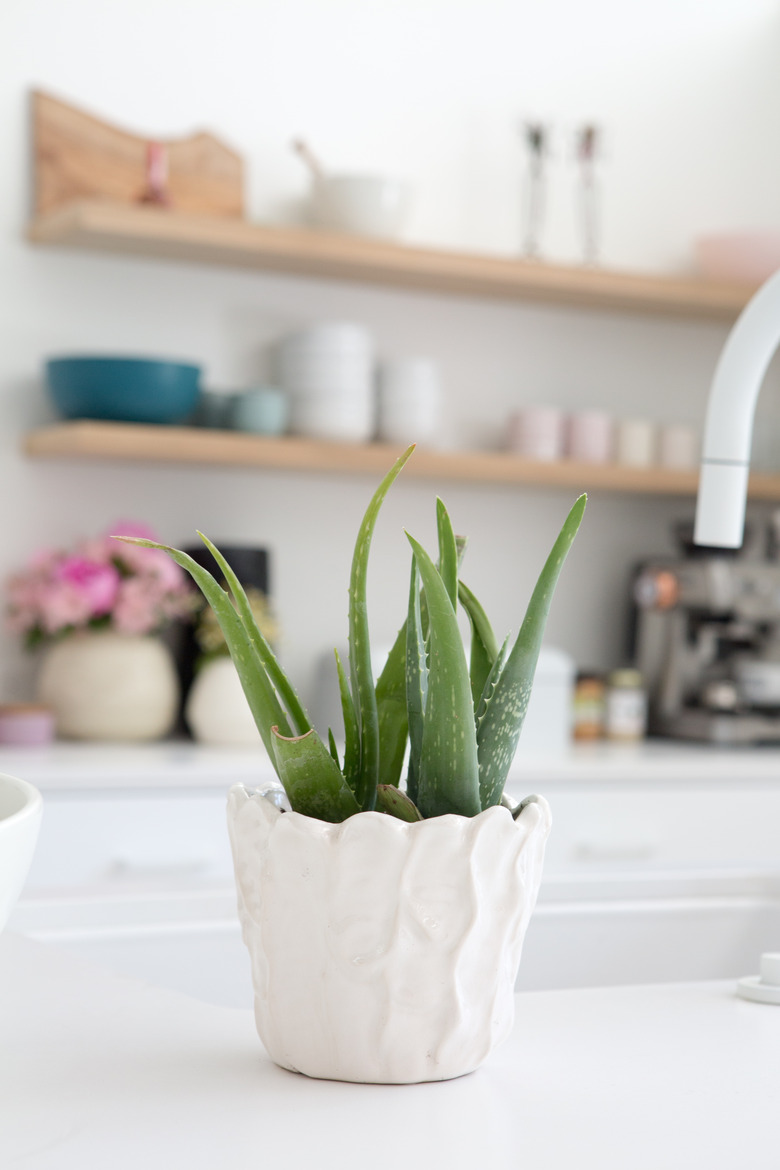How To Plant And Maintain An Aloe Plant
It is never a good sign when the fat green leaves of a potted Aloe vera plant, commonly called medicinal aloe, turn as brown as a terra cotta pot, but there is no need to weep or gnash teeth. Medicinal aloe is a survivor plant, and you probably can remedy the damage by adjusting the plant's sunshine, irrigation and/or soil.
Make Sure Soil is Well-Drained
Potted medicinal aloe is a tough little plant that usually grows on a windowsill without requiring constant care. **It absolutely must, however, have very well-drained soil.** If your aloe's leaves are softening, wilting or turning brown and mushy, check the bottom of the plant's pot for ample drain holes. **The interior portion of the pot's drain area should be covered by two inches of stones that are topped by gravelly or sandy soil.** If those elements are not present, then repot the plant correctly, put it in a bright corner and wait patiently for it to recover. If the damage is so extensive that the plant's roots are also brown, then trim off the root rot before repotting the remainder of the plant.
Avoid Watering Too Much
Even if its soil drains well, a potted medicinal aloe doesn't do well in excess water. The plant is native to the hot, dry climes of Africa, and its irrigation requirements are minimal. **Never water the plant until its soil dries thoroughly from the last drink.** The exact timing between watering days depends on many factors, including the size of the plant pot and the heat level in your house. If you think you overdid the water, the solution is simple: Put the plant in a bright corner, and don't water it for two weeks. If it regains its vigor, adopt a less frequent irrigation schedule for it.
Avoid Watering Too Little
Like many succulents, medicinal aloe is a low-water plant, but it's not a no-water plant. Just because the plant is drought-resistant does not mean you can ignore it for a month and still expect it to be healthy. **If you don't water a medicinal aloe plant, it uses all the moisture stored in its leaves, which then become thin and curled.** If this goes on too long, the leaves will turn pale and red, eventually withering and changing to a yellow or brown color. If that happens, give your plant a generous drink and set it aside to recover.
Give It Sunshine
A medicinal aloe plant needs a bright location, but not too much light. If the plant's window location gets all-day sunlight or regular afternoon sunlight in a sunny climate, yellow-brown leaves can indicate a sunburn. Test this possibility by moving the plant to a location where it gets lots of light but no direct sunlight. If the plant's vigor returns, you've found the problem and solution. If a plant gets too little light, its leaves may grow out rather than up. If your plant seems flat, try a brighter location.
Keep It From Getting Cold
Medicinal aloe thrives outdoors all year only in the warm climates of U.S. Department of Agriculture plant hardiness zones 10 through 11. **If you are in the habit of putting your potted medicinal aloe outside during summer or on warm winter afternoons, bring it back inside before the temperature dips.** Otherwise, its leaves may turn brown as a reaction to cold. Patience is required to wait and see whether or not the cold-affected plant can recover. Sterilize pruners or a knife with rubbing alcohol, and use the tool to remove all the plant's leaves that appear glassy at their point of origin. Then place the plant in a bright, cool location and give it time to heal itself.
TIP: There are around 300 species of aloe vera, some of which can live up to 100 years when properly located outdoors or cared for in pots.
References
- Arizona Cooperative Extension, Yavapai County: Growing Aloe Vera
- Floridata: Aloe Vera
- University of California-Davis Botanical Conservatory: Botanical Notes — The Genus Aloe
- The Guardian: Has Cold Weather Killed My Aloe Vera?
- The Old Farmer's Almanac: Aloe Vera
- University of Vermont: Aloe Vera
- Fine Gardening: Red Aloe, Aloe Cameronii
- Plant Village: Aloe Vera

